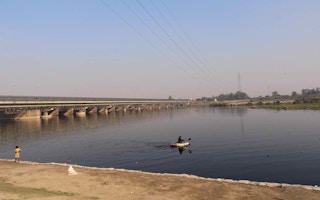A couple of months ago, a high court in the northern Indian state of Uttarakhand handed down a unique verdict on two of India’s holiest rivers.
The Ganga and the Yamuna were declared “living entities”, thus acquiring the status of a legal person. Under the verdict, polluting these rivers is tantamount to harming a human being.
This landmark ruling is an important institutional step toward fighting severe pollution of river waters and surroundings. Proof will no longer be required that discharging waste harms any individual person, since polluting the waters will be a crime against the river itself.
The judgement on the Ganga and the Yamuna follows a bill passed by the New Zealand parliament declaring the Whanganui River as a legal person. The law was welcomed by the members of local Iwi tribe, which have a deep spiritual connection to the Whanganui.
Historically, rivers have nurtured the emergence of civilizations, provided life lines for habitations to grow, and for cities to develop and flourish. The identities of cities and rivers are intimately linked across continents and cultures.
The systematic degradation and ultimate death of these lifelines have led to severe deterioration of quality of life in cities, and an identity crisis for communities with deep cultural associations and economic dependence on rivers.
Rivers at core of livability nexus
The Ganga is the most sacred river to Hindus, who worship it as a goddess. It is also a lifeline to millions and historically nurtured the growth of many cities along its banks as cultural and industrial hubs.
But the Ganga also maintains its position among the top five most polluted rivers in the world.
The declining trend and inefficacy of actions so far means the Ganga could very well share the fate of the Pasig River, which traverses Metro Manila from Manila Bay in the Philippines. Once a major transport route, source of freshwater and thriving ecosystem, the Pasig has become one of the most polluted and toxic rivers systems in the Philippines.
Declared biologically dead in the 1990s, the Pasig is considered the toilet bowl of Manila, a dumping ground for domestic and industrial waste.
The Pasig’s decline demonstrates just how great a threat that pollution is to the quality of land, air and water—which together form the nexus of livability for those around these waterways. Rivers are at the core of this nexus, as water knows no administrative boundaries or jurisdictions.
Rivers, gifts of nature that form the backbone of economic activity in cities, are the sad victims of fragmented institutional decision-making. Too often they fall through the cracks between complicated webs of multiple national and state ministries and jurisdictions.
So, who really owns a river? What happens to a city that grew around it, drawing life and its identity, when a river starts to die? And why do citizens desecrate their asset, sometimes to a point of no return, even if they were spiritually connected to it like they are to the Ganga?
“
A paradigm shift from singular planning approaches together with innovative leadership can restore rivers and save cities from loss of livability.
Legal river guardians
To protect the Ganga, the ruling in India gave the river “legal guardians.” These are the director of the national project for the river’s cleanup, the chief secretary of the state of Uttarakhand, and the advocate general. All three individuals act as persons in loco parentis to protect, conserve and preserve the Ganga and its tributaries.
In the case of the Whanganui, the river was accorded two guardians, one appointed by the government and the other by the local Iwi tribe.
Both rulings could—and indeed should—be the beginning of a movement to recognize the rightful legal status of critical natural assets, at par with people. This would have a huge impact in Asia and the Pacific, where natural assets are often taken for granted and allowed to deteriorate due to other development priorities and shortfalls in institutional capabilities.
A paradigm shift from singular planning approaches together with innovative leadership can restore rivers and save cities from loss of livability.
Traditional asset management and insurance approaches should be reformed to ensure they help maintain the sanctity and health of rivers as natural assets. And another challenge will be transforming fragmented decision-making processes that currently enable and accelerate the degradation of our rivers.
Whatever the obstacles, the cost of inefficient action and lost times is just too high. To maintain the identity of our cities and value the cultural associations of communities, we need to bring our rivers back to life.
As the Iwi say, “I am the river, and the river is me.”
Sonia Chand Sandhu is Senior Advisor to the Vice President for Knowledge Management and Sustainable Development, ADB. This article is republished from the ADB Blog.


















